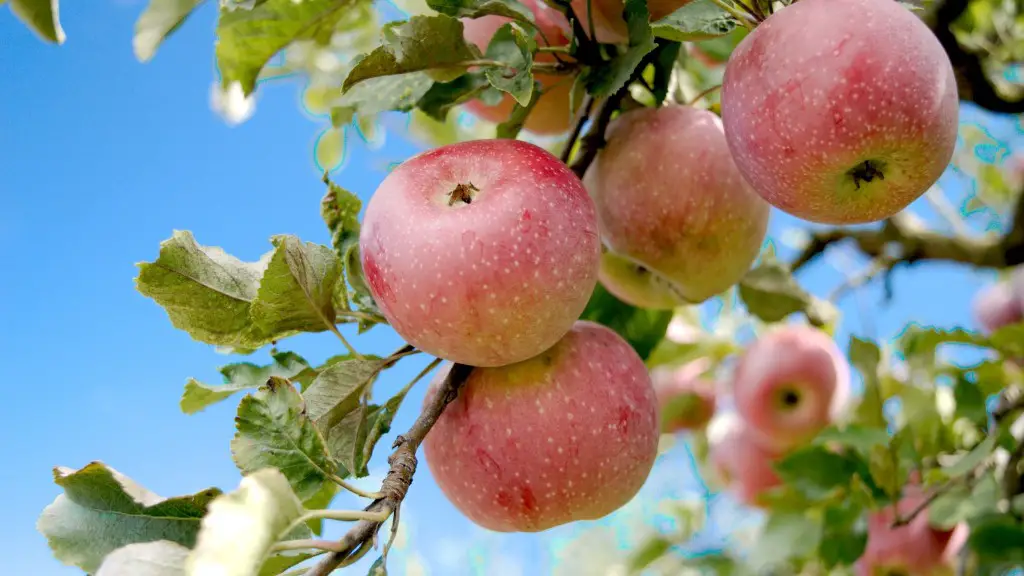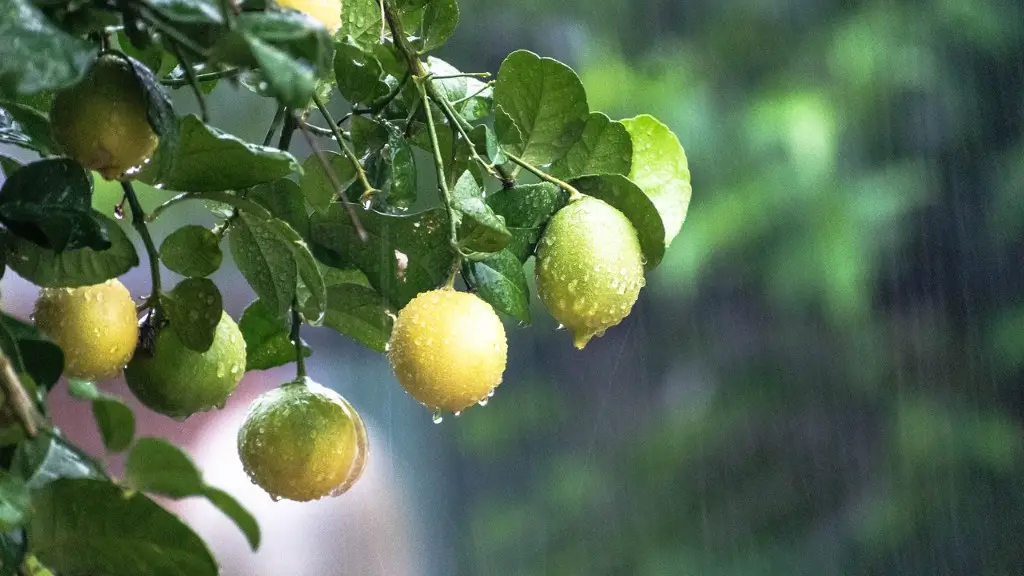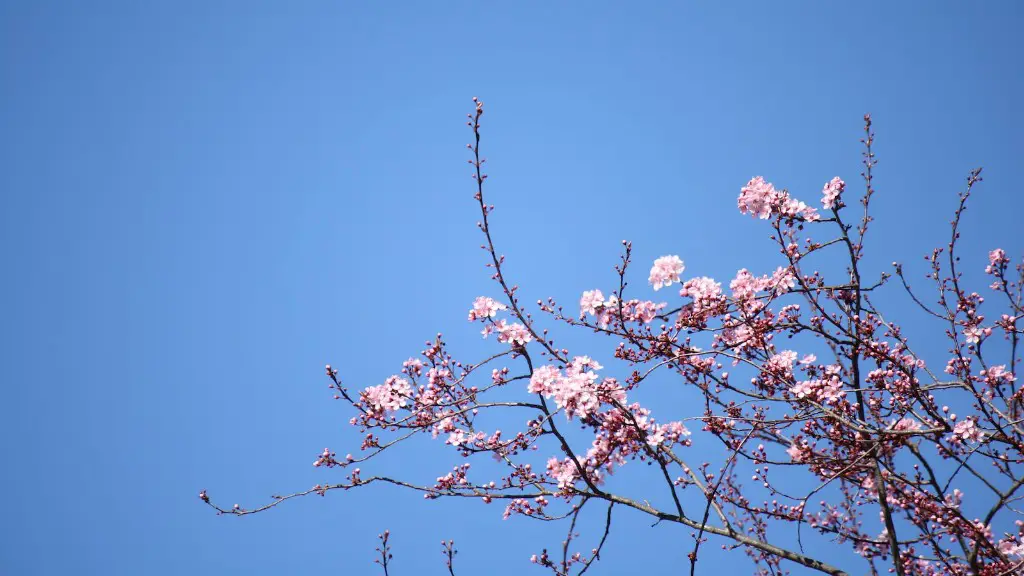Most likely the orange spots on your apple tree leaves are caused by a fungal disease called Cedar-Apple Rust (Gymnosporangium juniperi-virginianae). This is a widespread plant pathogen found in many parts of the world. The presence of these spots is a definite indication that the pathogen is present and should not be ignored. Controlling this disease requires an understanding of the entire disease cycle and the appropriate measures that need to be taken to effectively reduce its impact.
This disease is primarily caused by a fungus that cycles through two different hosts. Spores of the pathogen (known as urediniospores) develop in late spring on cedar trees and junipers where they form orange-brown galls. In early summer, the spores are spread by wind and splashing rain to apple, pear and other related plants. On these trees, the spores germinate and form structures that produce and release aeciospores. In late summer, these aeciospores are released and cause the same orange spots on apple trees, pear trees and other related plants.
The orange spots are small, round, orange pustules on the surface of the leaves. The presence of these spots can be a sign of severe infection. The spots become more numerous with additional spores released between late summer and early fall. The more spots present on the leaves, the more severe the infection. Treatment of this disease needs to be taken very seriously in order to avoid irreversible damage to the trees and compromise the quality of the fruit.
The best way to control Cedar-Apple Rust is to practice proper cultural management. This includes selection of plant species that are resistant to the disease; pruning of infected trees or branches; and removal and disposal of all infected leaves. In addition, fungicides should be used to prevent spore production. Fungicides should be used multiple times during the season, beginning when the disease is first visible but repeated as often as necessary to keep the infection in check.
It is always important to be vigilant when it comes to diseases in plants. Monitoring your trees on a regular basis will help ensure that any potential problems are caught early and addressed before they can do too much damage. Keeping an eye on the leaves of your apple trees and looking out for orange spots is the best way to know if Cedar-Apple Rust is present and to start treatment as soon as possible.
Treating Cedar-Apple Rust
Treating the cedar-apple rust disease requires proper cultural practices, fungicides and overall good hygiene for the affected area. The infected trees should be pruned, removing all infected leaves and branches. Furthermore, fungicides should be used to reduce the production of new spores as well as reducing the severity of existing spots.
The fungicides should be applied multiple times throughout the season, beginning once initial signs of infection are spotted. Repeated applications are necessary in order to keep the infection under control. It is also important to choose compatible fungicides for the affected tree or bush. There are many different fungicides available, so it’s important to read all labels carefully and follow the directions carefully.
Maintaining adequate airflow around the tree or bush is also important. Airflow is essential for the health of any tree and is important for preventing disease. Pruning the trees can help to facilitate this process, as can clearing away any debris or weeds that are growing around the base of the tree.
Another important part of controlling cedar-apple rust is to choose resistant species. In some cases, purchasing disease-resistant varieties of trees or bushes may be the best way to prevent the disease from reappearing. Additionally, it is always important to plant trees and bushes with adequate space between them to ensure proper airflow, which is essential for preventing disease.
Preventing Cedar-Apple Rust
Preventing cedar-apple rust requires careful planning and cultural practices. Planting disease-resistant species and creating proper spacing between trees will help to prevent the disease from occurring in the first place. Furthermore, tree pruning, removal of infected material and good air flow should all be part of your plan to prevent cedar-apple rust.
In addition, fungicides should be used to reduce the spore production of the pathogen. The fungicides should be applied multiple times throughout the season, beginning when the first signs of infection are spotted and continuing as long as necessary. Finally, the area surrounding the tree should be kept clear of debris and weeds, to ensure proper airflow.
For most orchards and gardens, a combination of cultural and chemical control is the best method for preventing cedar-apple rust. However, depending on the severity of the problem and the level of susceptibility of the apple tree varieties, there may be other options such as biological control that can be used. Consulting an expert in the field of plant disease can help determine the best approach to treatment.
Types of Fungicides
Fungicides are chemical substances that are used to protect plants against fungal diseases. Some fungicides work by forming a protective barrier on the plant’s leaves, while others work by killing the fungal organisms that cause cedar-apple rust. The most commonly used fungicides include chlorothalonil, mancozeb, propiconazole, azoxystrobin, and myclobutanil. Each of these products is designed to be used in different ways and some are more effective than others. It is important to read all labels carefully and choose the most appropriate product for the job.
In addition, some fungicides should not be used together with other products. Therefore, it is important to read labels carefully and follow instructions for timing and application. Applying too much or too little of a fungicide can result in damage to the plant or reduced effectiveness against the pathogen. Furthermore, some fungicides are less effective under certain environmental conditions and should be used at specific times.
Fungicides can be an effective tool for treating cedar-apple rust. By understanding the available products, the environment they are to be used in, and the proper application methods, effective measures can be taken to control cedar-apple rust.
Environmental Conditions
Environmental conditions also play an important role in the potential for cedar-apple rust to appear on your trees and cause damage. Moisture and temperature play a key role in the spread of the disease. The best way to reduce the risk of spread of the disease is to avoid conditions that are optimal for the spreading of the pathogen. This means avoiding humid conditions, watering sparingly and preventing the pooling of water around the trees.
In addition, selecting disease-resistant varieties of trees for planting can be beneficial. However, even resistant species need to be protected from environmental conditions that are conducive to the spread of the disease. Therefore, providing a dry layer of mulch around the base of the trees can help keep the area dry and reduce the occurrence of disease.
Other cultural practices such as avoiding overhead irrigation, removing weeds and debris around the tree, and providing adequate spacing between trees and bushes can also be beneficial in limiting the spread of cedar-apple rust. Following these steps and monitoring your trees for signs of the disease, you can help prevent the occurrence of cedar-apple rust on your apple trees.
Conclusion
Cedar-apple rust is an infectious disease that can seriously damage apple trees and other related plants. The orange spots that are often found on the leaves indicate an infection of the fungus. The best way to control the disease is to implement a combination of cultural practices, fungicides, and resistant species. Adequate spacing between plants and avoiding wet and humid conditions can help further reduce the chances of the disease occurring. By understanding the disease and practicing a few methods of prevention, you can help to protect your trees from the dangers of cedar-apple rust.




